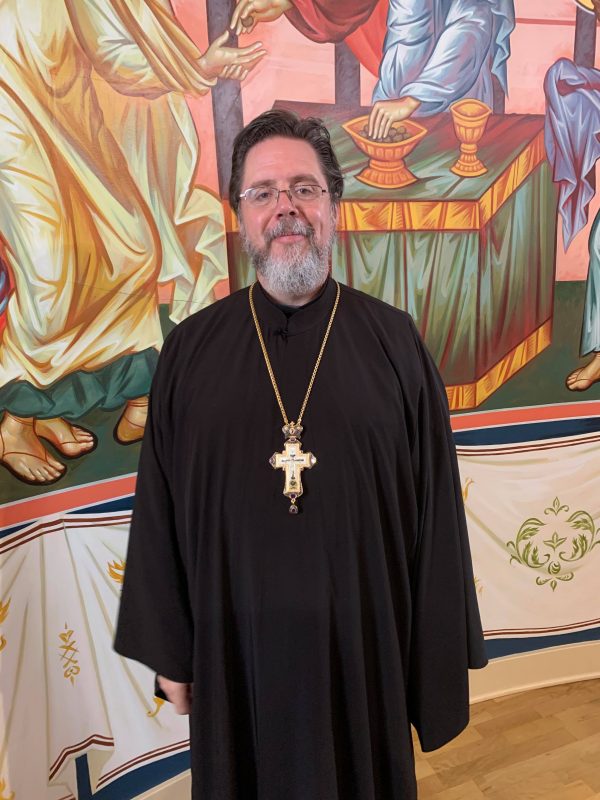ST JOHN OF DAMASCUS ORTHODOX CHURCH
HISTORY OF OUR COMMUNITY
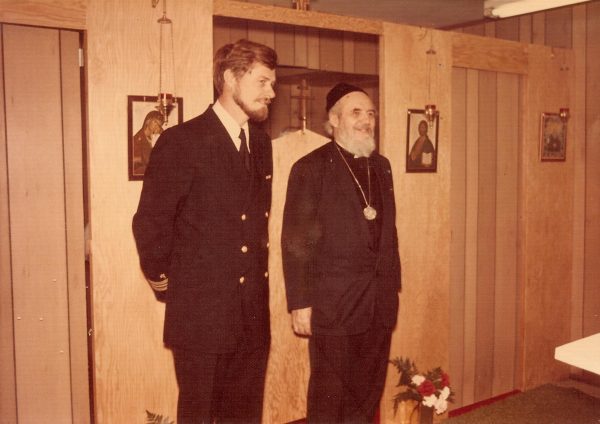
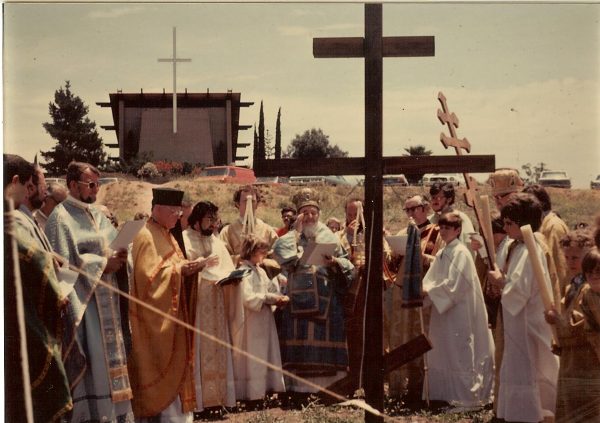
On May 18, 1975 a handful of Orthodox Christians assembled to celebrate the Divine Liturgy giving life to the Mission of St. John of Damascus. Under the pastoral guidance of the late Reverend Peter Haskell, the Mission set forth on a pilgrimage with a simple vision….to establish an English speaking Parish of the Orthodox Church in America in the North County of San Diego.
From its nativity, St. John’s was literally on the move. The first services were held at the Navy Alcohol Rehabilitation Center where Father Haskell was a Navy Chaplain and counsellor. The first independent place of worship was in an unused portion of the Sexton Real Estate office in Poway.
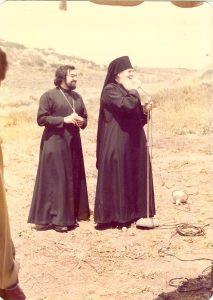
With the transfer of Chaplain Haskell and the arrival of Reverend Joseph Lardiero in the Fall of 1976, the Mission moved to the chapel of the Poway Bernardo Mortuary. On occasion, just as in the ancient Church, the Divine Liturgy was celebrated amongst the departed.
The founders of St. John’s had the foresight and wisdom to secure a 2.3-acre parcel of land along Espola Road in the northwestern border of Poway for the astounding price by today’s standard of $25,000. His Eminence, the late Archbishop John, presided at the ground blessing on June 4, 1977. Later that year,
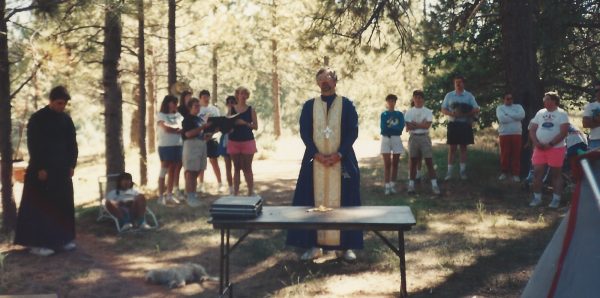
Father Lardiero departed and St. John’s was without a priest for several months.
During this difficult period, the Faithful continued to meet as a community in parishioner’s homes for “Reader’s Services”. By the Grace of God, Reverend Alexander Federoff arrived with his young family in November of 1978 and has remained here since (though now in retirement).
During this difficult period, the Faithful continued to meet as a community in parishioner’s homes for “Reader’s Services”. By the Grace of God, Reverend Alexander Federoff arrived with his young family in November of 1978 and has remained here since (though now in retirement).
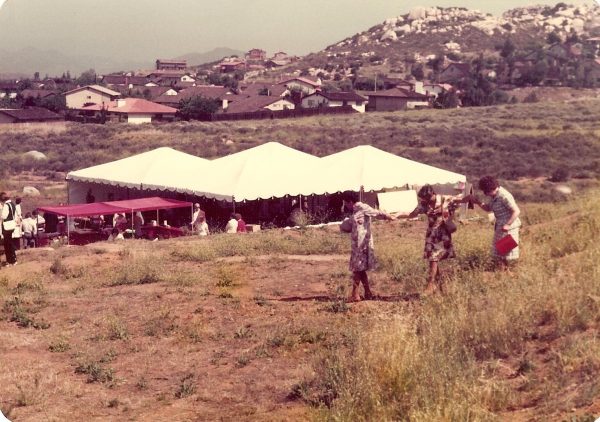
In March 1979, the Mission relocated to the Poway Senior Citizen’s Center, worshipping there for nearly two years. At a time when the struggle to move the Mission forward seemed more than could be borne, St. John’s was blessed by the Archpastoral visit of His Beatitude, Metropolitan Theodosius in May of 1980. He brought a message of encouragement that revitalized the Mission. He taught “Labors done in faith and love will be rewarded in the fullness of God’s time, not our own”. In February 1981, St. John’s moved to the Meadowbrook Middle School. Having no storage facilities at the school, the “church” was packed into a trailer, assembled and disassembled every weekend (and more) for over three years.
During the itinerant years, the Mission labored to develop the land. A site development plan was completed and a full set of architectural drawings was drafted. The first structure was to be a multipurpose building followed by two future phases to include a sanctuary and a classroom structure. It was a profound disappointment when it became clear that the design was too ambitious and beyond the means of the Faithful to finance. It took great courage to lie aside years of planning and begin again with a new and more affordable concept. The solution came in the form of a factory-built modular building financed by a church bond program. This allowed parishioners, family and friends to corporately carry their own “mortgage” eliminating the need for outside financing. In the Summer of 1983, the fund raising effort was kicked-off and in less than two months $120,000 was raised. In February 1984, three modular units were delivered and after four months of construction, the first Divine Liturgy was celebrated in the new structure on July 1, 1984.
At that time, 36 by 60 feet felt very spacious for a congregation of 40 or 50 parishioners. For the next several years that simple structure changed its interior nature as the function required. It was the sanctuary; it was the meeting hall; it was the banquet facility; it housed bake sales; it sold crafts and the roof leaked. “Build it and they will come” was the hope and prayer for the growth of St. John’s. Through the remainder of the 80’s, the congregation grew to 70 to 80 adult members and what had seemed spacious became cramped. The next step was clear – build the church sanctuary. With existing bond debt, it appeared impossible to consider. Yet, in the winter of 1990, a small group of parishioners
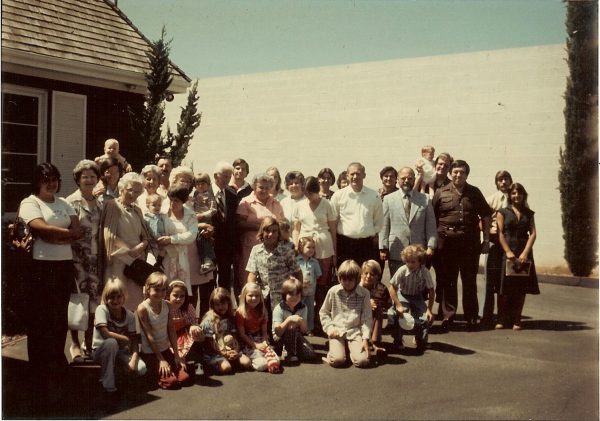
ignited by the financial generosity of one family put their feet to the path of planning the project. At the time, the goal was to have the church constructed within 18 months. It took four years.
A Design Committee was formed and all of the Faithful were invited to participate in the creative process. A Seattle-based architect was selected to create the design. Pledges were solicited from the membership and fund-raising strategies were developed. On August 28, 1990, the City Council of Poway approved the modification to the conditional use permit allowing St. John’s to construct a sanctuary. His Grace, Bishop Tikhon ceremonially broke the ground on December 8, 1990.
What followed was nearly 3 years of a tedious maze of design, redesign, building codes, city ordinances, variances, soils tests, civil engineering, surveys, visits with the City Manager and appearances before the City Council. In the end, the plans were complete and local government had granted “permission” to proceed. Only two questions need to be answered: Who would construct the building and how would it be financed? A second bond was issued, dinners were held, pastries were baked, commemorative bricks were sold and donations were given. Yet, every preliminary bid and financial forecast suggested the project was under-funded.
In a supreme act of faith, the Parish elected to violate the tenets of traditional business practice. A Christian general contractor was selected without competitive bid as the builder based primarily on his local reputation. Construction began in the Spring of 1993 knowing that there was a distinct possibility that the money would run out before the project was completed. Over the ensuing months, seeing the walls go up and the sanctuary take form created renewed enthusiasm. The church building itself was completed in only a few months. Legal occupancy was contingent on the completion of other improvements at the site including the parking lot. At the eleventh hour, the building fund was exhausted.

The solution was not immediately apparent but changing economic conditions worked in favor of the Parish. Interest rates had fallen and it was determined that a third bond could be issued but only if every current bond holders accepted a lower interest rate and new notes could be sold. The call went out to the Faithful once again and as always they responded. Without exception, those that held prior bonds agreed to roll them over into the new issue. Additional funds were raised and the parking lot was paved. Provisional occupancy was granted by the City of Poway. The Parish moved into the building and celebrated the first Divine Liturgy on Forgiveness Sunday, March 13, 1994.
The building by all external appearances was a “church”. It did not become the true “other-worldly” Heavenly sanctuary until it was consecrated to that use. In a once-in-a-lifetime event, the building was consecrated on February 25, 1995. Four Hierarchs concelebrated to literally baptize and chrismate the altar and building. His Beatitude Metropolitan Theodosius was the primary celebrant along with His Grace, Bishop Tikhon, His Grace, Bishop Basil and His Grace, Bishop Boris…. the later three being either current or past Bishops of the Diocese of the West. It was an unforgettable event in the life of the Parish of St. John of Damascus.
The consecration of the Temple moved the Parish from adolescence into adulthood. The years of anticipation of what could be, the planning, the fund-raising and watching the buildings take form was as exercise in looking inward with “growth” being most palpably measured by the physical structures created. Over the last years of the twentieth century, St. John’s accepted the more difficult challenge of being a wellspring of the Orthodox Faith and a beacon for those new members drawn to her bosom.
During the decade of the 90’s, St. John’s was blessed by the presence of His Grace, Bishop Boris (Geeza). Upon his retirement in 1988 as Bishop of the Diocese of the Midwest, he relocated to his home in the North County. A warm and engaging man, he became affectionately known as the “Patriarch of Poway”. The generosity of his counsel and financial support has left an indelible mark on the hearts and minds of all who knew and loved him. His dream was to see the erection of the Iconostas. He fell asleep in the Lord on December 30, 2000. The central portion of the Iconostas had just been erected.
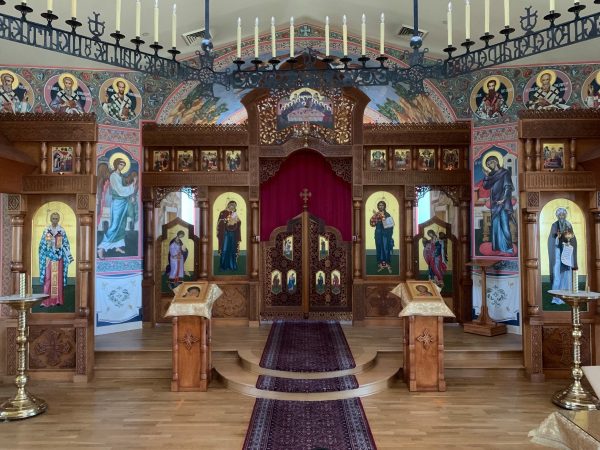
Remembrance is one of the cornerstones of Orthodox theology. The Lord
commanded “do this in remembrance of me” as he broke bread and distributed wine to the apostles as the antitypes of His Body and His Blood. At each Divine Liturgy we assemble to form the Church and “remember” the Lord’s sacrifice not only as historical fact but also as present reality. It is a mystery how past and present can be united within the memory of the Church as an eternal now.
commanded “do this in remembrance of me” as he broke bread and distributed wine to the apostles as the antitypes of His Body and His Blood. At each Divine Liturgy we assemble to form the Church and “remember” the Lord’s sacrifice not only as historical fact but also as present reality. It is a mystery how past and present can be united within the memory of the Church as an eternal now.
On May 31st 2020 our long-term beloved pastor Archpriest Alexander Federoff entered into a well deserved retirement.
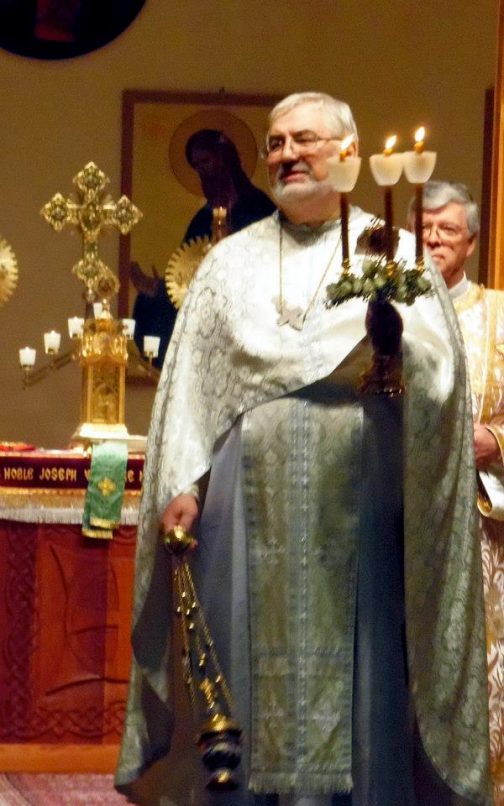
His Eminence Archbishop Benjamin assigned Archpriest K. Michael Anderson as Rector and pastor. Together we look forward to continuing and deepening our ministry as the presence of the Orthodox Christian Church in the North San Diego County area.
